For each year's first three quarters, we celebrate by sharing a list of our favorite music releases. Unlike our year-end lists, these quarter features are casually compiled, with an aim to spotlight the underdogs and the lesser-heard among the more popular picks. More from this series
Disgusting hybrid outgrowths. Nebulous movements of rhythm. Ontological nihilism. The last three months can’t be easily reduced to pithy storylines, but there were certainly themes that arose from our favorite releases. From Jenny Hval’s apocalypse to Angel-Ho’s death drops to Prurient’s suffocating aesthetics, many of our picks had an oppressiveness to them, a weight that simultaneously crushed us and opened up new environments. In fact, a privileging of “place” was explored quite thoroughly — both implicitly and explicitly — by artists like Hafdís Bjarnadóttir, Jessica Smurphy, and Beat Detectives, who complemented the world-building, re-/de-constructive efforts that took the voice (C. Spencer Yeh), the beat (STAYCORE, Dr. Yen Lo), the signifier (Holly Herndon), and the medium (D/P/I, Lil Ugly Mane) to task. The reach, as always, became ever extended, whisking us away in bustling moments of ecstasy (Container), expansion (Jlin), and nuance (Young Thug), leaving us writhing in its dizzying, unrelenting onslaught. And we’re only halfway through the year! <3 <3
Check out our favorite 20 below, with 25 other releases listed at the end that didn’t make the final cut. Our favorites from the first quarter can be found here.
Sicko Mobb
Super Saiyan Vol. 2
[Self-Released]
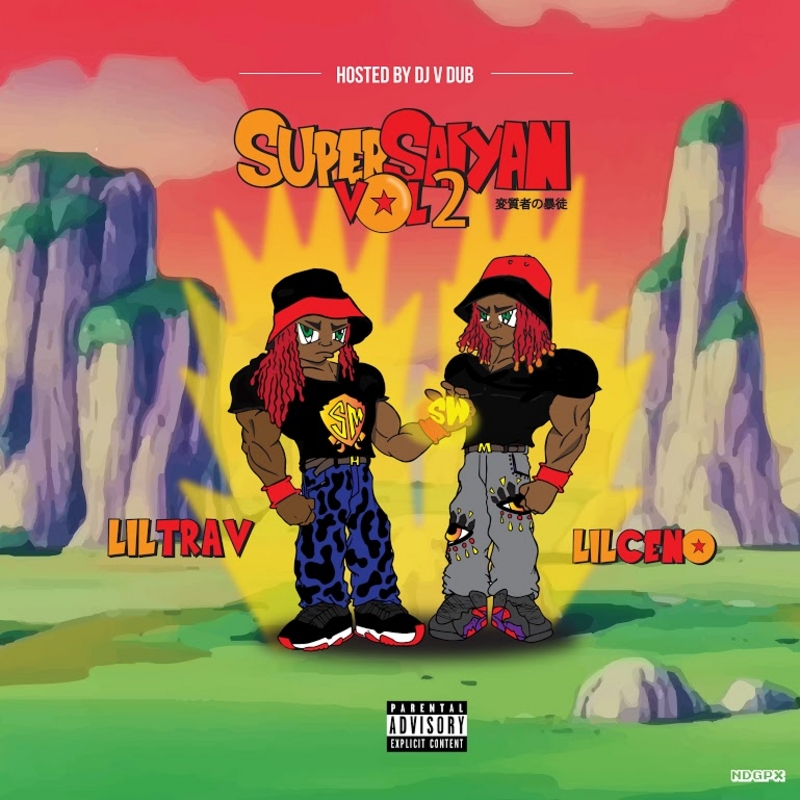
As boundaries between modalities historically arranged in hierarchies continue dissolving and recalcifying, TMT, like all publications, has been challenged with embracing cosmopolitanism while retaining a critical and idiosyncratic voice. In our EUREKA! section, we’ve made room for narrative sincerity, appreciated slight but significant shifts within genre, and even forgone rubrics all together. Certainly, a sense of generosity has been integral in finding value amidst a growing pile of shit, but bumping Super Saiyan Vol. 2 feels like penance for ever thinking shit like this needed our generosity. Soe Jherwood’s review wasn’t simply an argument for its inclusion; it was an echo of our collective praise, a compendium of examples of why we should be actively looking for EUREKA! moments both in front of our faces and in the shadows. Super Saiyan Vol. 2 violently bucks every stereotype that syrupy, populist music is inherently regressive; every second here is aggressively forward-thinking, never breaking for ANYTHING or ANYONE. So when you see us bopping along, it isn’t a consolation; it’s a declaration of freedom from our outdated systems of aesthetic gerrymandering. Super Saiyan Vol. 2 is a document of “finding it!” but our response is just as much a statement of its stupefying power.
Angel-Ho
Death Drop From Heaven
[NON]

Call it Arcadia — a mountainous place offering peace and simplicity — or Elysium — the blessed abode of the dead — Angel-Ho is cut from above, a celestial, albeit salacious, attendant to the supreme. The suggestive Death Drop From Heaven fell nigh to Ho’s “Luxurious (Credit Card Mix)” and tracks from Chino Amobi and Nkisi, with the launch of NON — “a collective of African artists, and of the diaspora, using sound as their primary media, to articulate the visible and invisible structures that create binaries in society, and in turn distribute power.” DDFH, from the materially Cape Town-based Angelo Antonio Valerio, had us especially parched; there’s a hellish heat in contact with otherwise chilling segments in this 27-minute mix. Embarking on frantic percussion, the mix dissolves into dark synths and a choral glaze, while fracturing flashes of miscellany and hard-hitting kicks repeatedly interpose “I ain’t playin’ with these…”
Sufjan Stevens
Carrie & Lowell
[Asthmatic Kitty]
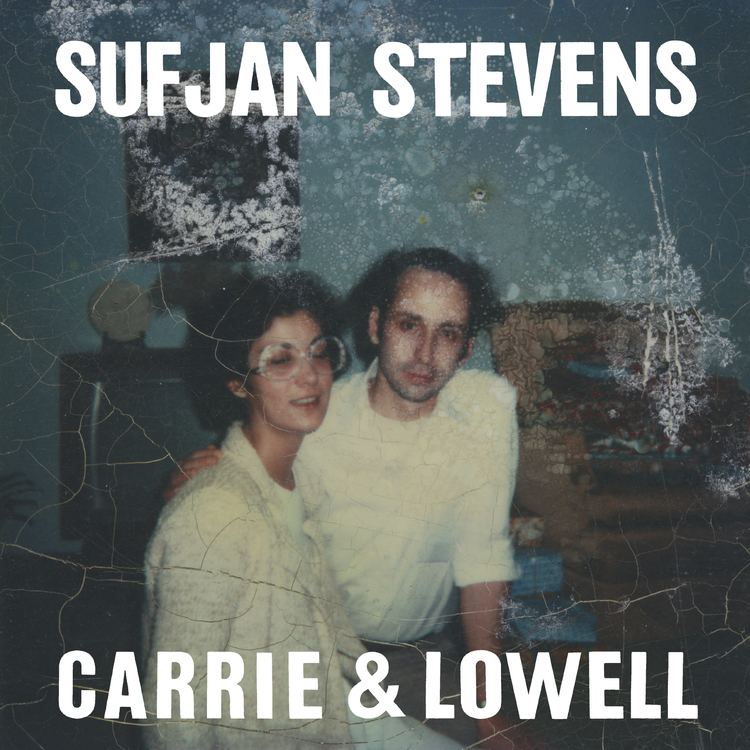
Death is written all over Carrie & Lowell, just as it’s written all over us. The “one-winged dove,” whose flight endows our regrets, afflictions, failings, and mistakes with a radical finality, burdens Sufjan Stevens’s embroidered guitar and forlorn melodies with more weight than he can possibly carry. Yet it’s not death itself that lends the Michigander’s haunted eulogies their poignancy; it’s death as a symbol of the essential distance, absence, and longing that separates us from each other while we’re all still alive. Through the unbridgeable gap of death, Stevens’s fragile picking and humane poetry remind us that there’s always an unbridgeable gap separating us from our loved ones, and that even if I manage to move a little closer to you over the course of our lives, there’s always a “black shroud” that tears us apart even before it tears us apart.
Jlin
Dark Energy
[Planet Mu]
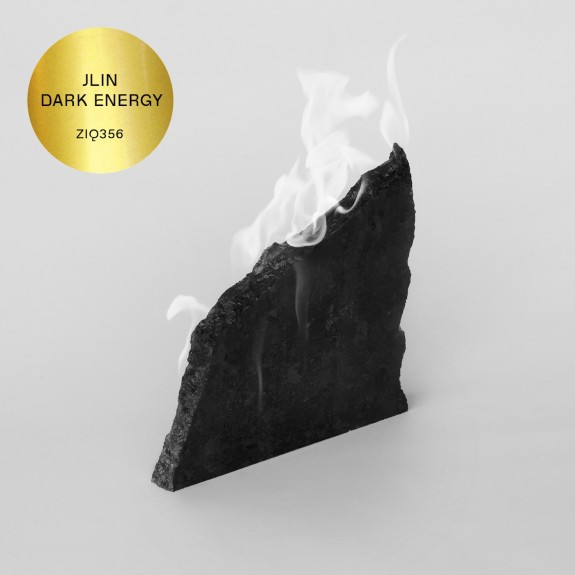
“But I don’t want to become a stereotype.” And I suspect there is no greater threat to the reception of a work of art than its predetermined categories and the ways in which they strip an object of its emotional resonance by virtue of their solidity. But categories aren’t starting points; they’re negotiations, worked and unworked out — in jest and in terror — over time. A steel worker from Gary, Indiana doesn’t make an album, but is borne from it: “This album took my entire life to make.” So to listen to Jlin’s Dark Energy is to negotiate its dark matters — beyond the posturing of identity and genre alike — and thrust into its in/human aggressions, its uncomfortably permeable boundaries, and its ceaseless bearing into the future of itself — and beyond: It’s who I am. And it’s a remarkable work of art, whoever you are.
Prurient
Frozen Niagara Falls
[Profound Lore]
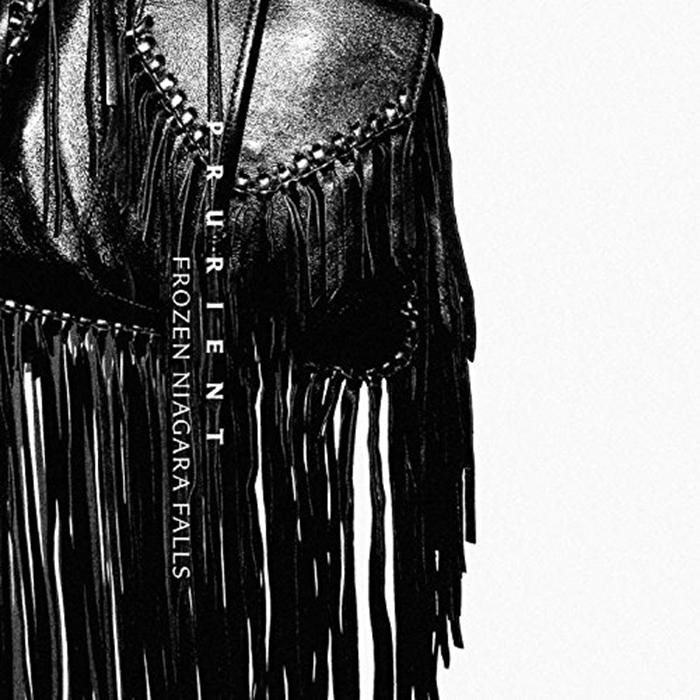
If only the new sincerity were the self-lacerating and ulcerous tones of Frozen Niagara Falls and not the bland, non-denominational yearnings of David Foster Wallace and The Arcade Fire. A monument to a 15-year career of bitter musical cynicism across many forms, with each dragged out for their most blunt emotional effects — apocalyptic neofolk, noise, EBM, harsh noise, cold wave, etc. — Frozen Niagara Falls is as diverse, emphatic, and heartfelt a work as any from those sensitive souls. But it also has a fevered cynicism and ontological nihilism that those works fail to muster, making it a far better moss icon for a shattered contemporary urbaninity. A sweeping and fractured rendering of NYC, the core of abasement that runs through Fenrow’s career defaces the self-seriousness of both its most maudlin moments — “I promise to only fuck prostitutes” — and its hyper-specific suicide souvenirs while leaving their brute force intact — “waking up in Beth Israel.” Almost absurdly epic while, of course, a resolute anti-epic, it’s perhaps the first Prurient release to connect, even as it laughs bitterly at the idealism of connection (let’s remember not to take the blunt emotion of those 80s keys at face value, even if they still hurt) and plunges its head into both a searing vat of noise and the ceaseless churn of fetid NYC human bodies. Connection as abject dispersal, harsh noise as melodramatic modern song.
C. Spencer Yeh
Solo Voice I-X
[Primary Information]
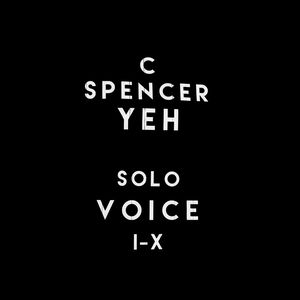
The more I listen to 2015, the more I realize that this year’s theme is vocal fragmentation. Today, more than ever, I’m hearing so many clubby, loungey musicians — forming in legion on SoundCloud — make syllables dance, pushing language through a shredding machine; beatmakers and sample-heavy musicians also do the same, appropriating without end. And then — like a deus ex machina hacking your computer — there are musicians like C. Spencer Yeh, steeped in an avant-garde tradition with more ties to the University than the Nightclub. On Solo Voice I-X, Yeh records vocal utterances, looping them and leaving them mostly dry, with minimal editing. The result: a hyper-materialistic, ultra-zoomed in composition, with an almost nauseous, anti-musical allure.
Action Figures
Action Figures
[Bootleg Tapes]
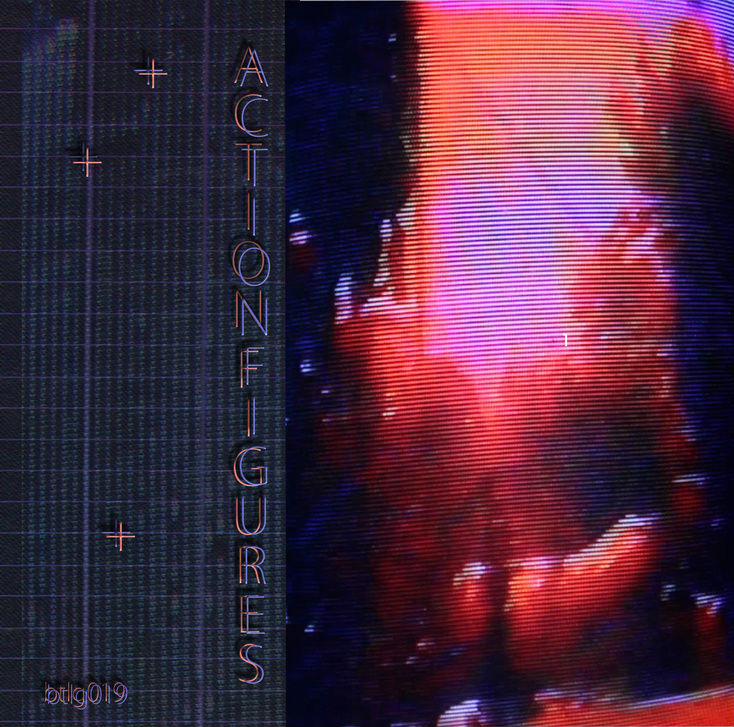
In the beginning, there was the Look, a moment of existential assertion, a reversible, oppressive relationship bound up with objects (with becoming objects) and gazes (with colonizing gazes). A moment of domination and violence. Then came the Measure, an abstraction of the Look that required no looking, a dissolution of violence that affirmed extant controls. A painless, mournful scrutiny that, evading and omitting no one, signals the death of aesthetic autonomy and simultaneously gives birth to a multiplicity of canons. Enter, now, Perception: not a return to the body, still less a return to aesthetics, at least in any active and independent way. We hold together fragments of form, surfaces in passing: paranoia, leisure, hospitals, performance, spreadsheets, money, cinema, the gym. Sensation, relocated and exposed: effortlessly mobile, inherently passive, tangible segments of the world-as-image — tagged and fixed in an ongoing moment of uneven hypnosis.
Container
LP
[Spectrum Spools]

The tree of life is not really a tree — it’s a tangled fucking web, and Container is one of its most disgusting hybrid outgrowths; noise-techno’s weapons are by now pretty familiar and as unwholesome as ever, but you haven’t heard/felt them so purely, so concisely, so excitingly deployed since you crawled out of that swamp. This album is pretty much pure blown-out drum machine, sometimes accompanied by squealing filth, by sirens and squalor; it doesn’t need a bass line, handclaps, choral pads, etc. All that excess can be sloughed off like your whole soon-to-be-corpse. You’re a worm, a lizard, some other repulsive quivering pile of flesh, and this is a glimpse of your post-human future, billions years of evolution not just bypassed, but made irrelevant. You’re irrelevant. You’re a vessel for forced movement, for horizontal transfer, for what Container does to you.
Various Artists: STAYCORE
SUMMER JAMS 2K15
[STAYCORE]

When STAYCORE, the Stockholm label fronted by producers Dinamarca and Ghazal, pumped out their SUMMER JAMS 2K15 compilation last month, it felt like a sort of diachronic anchoring point for the soca, kuduro, and tresillo beat styles that skirt across various genres and communities. The compilation clearly defines a nebulous movement of rhythm that has previously pervaded strands of UK bass, grime, and funky, as well as American hip-hop and, most recently, art club — a “genre” that often takes the spark of alterity, plurality, and difference to construct a perpetual exploration in authenticity, appropriation, and relational aesthetics occurring in the glossy, specific world of dance music. STAYCORE retroactively and gorgeously sums up the discussion into a serrated collection of club cuts from producers who favor a more economical track design; Zutzut, Endgame, Mechatok, Dinamarca, and Janus-affiliate KABLAM are all especially known for their honed, salient beatwork. They’re known to dip into stark vistas inflected by more organic tendencies, where the gallery wall is pock-marked by flecks of oil, hair dye, Sriracha, and, since STAYCORE’s current HQ is indeed Scandinavian, perhaps a big smear of lingonberry jam. These beats are some of the most system-primed cuts to be released all summer; each has a spartan control of the frequency spectrum that begins with Lil Tantrum’s immediate trunk-shaker “Picuda,” cruising effortlessly into Mapalma & Mobilegirl’s “Philae Touchdown.” If the comp were meant as a means to introduce the label’s squad and culture, we’ll be name-dropping STAYCORE artists well into the rest of 2015. If it were meant to be a visceral collection of tracks to chorus the rest of your summer, look no further.
Jenny Hval
Apocalypse, girl
[Sacred Bones Records]
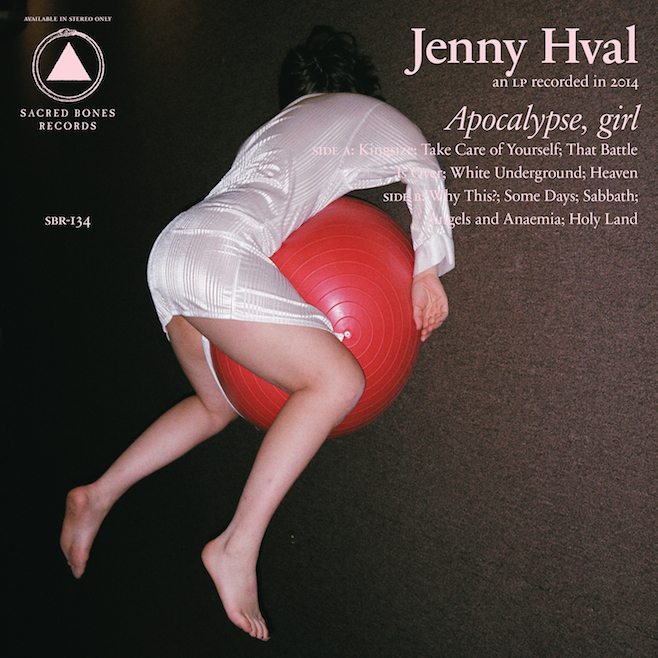
Complexity.
We deny complexity.
We avoid our emotions at their fullest extent.
We are scared of the mess that is human nature.
What effort we go through to kill it like a feral cat.
Reduce everything to analytics.
Big, soft data.
Like a king.
Charts.
Graphs.
Predictions and forecasts.
Every action, every thought gains a quantity that is either positive or negative.
Nothing in between.
Everything becomes binary.
Yes.
No.
Up.
Down.
In.
Out.
Nothing in between, even though that’s where the world is.
We refuse complexity, because we don’t have enough time to allow it.
Time isn’t there, because we don’t want it there.
We want output.
We want results.
We don’t want imagination, we want you to take care of yourself.
Getting paid.
Getting laid.
Results, output.
We don’t want time, because it’s not output.
You cannot switch places with those around you.
Your dreams are a repetition of an error.
So we say:
Sexuality is pornographic!
Religion is mental illness!
Emotion is irrational.
If complexities cannot be quantified, there must be something wrong with them.
We become binary.
Either.
Or.
Nothing in between.
Yes.
No.
In.
Out.
We see a darkness.
No future.
No wonder there’s so much death.
Young Thug
Barter 6
[300 Entertainment]

The syrupy zones inhabited by Young Thug on Barter 6 constitute the most fully realized peek into his psyche thus far. Thugger made it not through sheer market force alone, but chiefly by way of being so resolutely other. The memes, the virality, and the haters are addressed in a palpably self-aware manner, all in that same notorious, almost gender-fluid register that has proven to be the real fault line between his fans and detractors. Call him the naturalist’s rapper, one who operates from a distinctive paradigm while remaining somewhat grounded within his own socioeconomic reality. After all, unlike his idol, what is Young Thug but a human being? From friendship to fatalism, the modes are cycled with genuine emotion, even (briefly) straying into conscious rap with a tribute to Mike Brown on “Od.” With the 6, the linearity of the album — or rather, “retail mixtape” — format hasn’t impeded on Thug’s creative energies. Far from it; through the application of London On Da Track, Wheezy, and Kip Hilson’s airtight production, his craft has reached newfound levels of nuance and sincerity, more than the hoodwinking personification of the :P emoji could have ever let on.
Smurphy
A Shapeless Pool of Lovely Pale Colours Suspended in the Darkness
[Leaving]
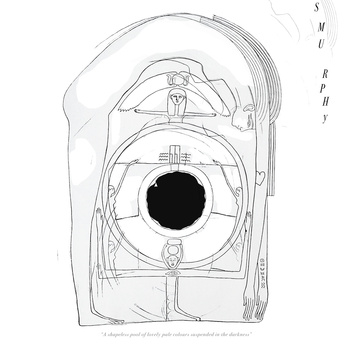
Once, producers used the club’s physical space as an alchemical vessel, hermetically sealing their vibrations in a closed chamber, generating genre purity out of constricted locality. The club was an attractor for the energy of a city, and producers took that energy and pushed it into a specialized form, a form that would go on to shape the scene within the enclosed room, guiding the work that followed. But something is changing: the geography of the club has suddenly ruptured, spilling out sounds into a global laboratory, tainting the purity of site-specific scenes. Records like A Shapeless Pool deliberately undermine the club as a site, the scene as a closed party, the event as an exclusive moment. What’s most exciting about Jessica Smurphy’s opening of the club’s walls is her shaping of both local and global energies into new forms that move beyond the mere guidance of dance motions. These forms provide a larger range of more fluid possibilities for experiencing the spaces of the mind-as-club, the world-as-scene.
LIL UGLY MANE
THIRD SIDE OF TAPE
[Self-Released]

There’s a fairly good explanation of what THIRD SIDE OF TAPE is and why it exists already on Lil Ugly Mane’s Bandcamp. By way of loquacious monologue and esoteric quotes that will probably never be deciphered, LUM explains that his iconic project — an exercise in exploring the gradual devolution of music into an ephemeral, transitive commodity — is coming to an end. But trying to rationalize the whole thing would defeat the purpose of the tape. Though a vast array of hilarious, always engaging sounds, THIRD SIDE OF TAPE simply exists to take us through the mind of a creative and fearless artist, and we excitedly follow, no matter how deep into the rabbit hole he takes us. Which is far: With induced stomach pains, cold sweats, and extreme flashes of violent light appearing at the edge of the eye, we enter a sustained period of constant musical epiphany for up to 576 hours. That’s almost a month. The fever dreams, a side effect, lasts for about twice this amount of time.
Hafdís Bjarnadóttir
Sounds of Iceland — field recordings by Hafdís Bjarnadóttir
[Gruenrekorder]

Hafdís Bjarnadóttir assumes the role of a reporter on her latest collection of field recordings. Travelling from the southwestern part of Iceland up to the eastern fjords, she focuses on the aural planes that define her home country while avoiding any sound directly derived from human beings. As opposed to recording her journey, Bjarnadóttir details specific areas, where she takes a sonic snapshot of each location, depicting moments in time that are graceful and uninterrupted. This creates a curious disconnect between the recording and the physical terrain that Bjarnadóttir explores. The presence of wildlife appears reactive to the conditions the artist imposes upon each landscape, which makes for a desolate and foreboding suite that doesn’t play to audience expectation. Instead, it’s Bjarnadóttir’s arrangement — the continual sound of water and the wind-carved thuds, clicks, bubbles, and blasts — that make this such a fascinating album and a firm favourite from the Gruenrekorder catalog.
Robert Aiki Aubrey Lowe & Ariel Kalma
FRKWYS Vol. 12: We Know Each Other Somehow
[RVNG Intl.]

Music that transports the mind to an abstract plane that betrays only slight reminders of human presence. Music that harnesses modern technology to sketch the outlines of an ancient world. Music whose meditative beauty embodies its own strain of nontheistic spirituality. Search the contemporary ambient underground and you will find short-run cassettes or unheralded LPs that promise such listening experiences, but none of them will deliver to the extent that We Know Each Other Somehow delivers. Its creators, brought together as part of RVNG’s FRKWYS collaboration series, have each explored the intersections of the electro-acoustic, drone, and minimalist traditions on their own time. Robert A.A. Lowe has reached the god tier of multi-instrumental polymathy. His intricate modular synthesis meshes here with his angelic voice and field recordings into stacked fine-grain strata. Ariel Kalma’s prophetic recordings from the 1970s and beyond continue to inspire new acolytes today. His flute, his sax, his keyboards, and his didgeridoo carry these sessions up above the treeline and into the firmament. Kalma’s final mixes, spatialized to an impeccable level of detail, drip from speakers in warm dollops of sustain and spectral melody. I have heard this record dozens of times, and I reckon that I can never listen closely enough to truly know it, but I will try.
Beat Detectives
Boogie Chillen / The Hills of Cypress
[Where To Now?]

Throw-away culture as if your being has any significance on society, to begin; orange and green and red and purple and Beat Detectives’ Boogie Chillen / The Hills of Cypress. Knowing exactly how to swim in the club when all your clothes are either hanging by a thread or are in heaps amongst the floor. Beat Detectives’ Boogie Chillen / The Hills of Cypress (much like other second-quarter listees, Angel-Ho, D/P/I, and Lil Ugly Mane) is exactly why the word “album” is an antiquated term in today’s music-making mayhem market. And it ain’t too far off from their new Not Not Fun LP Climate Change.[Transitional sentence that describe Boogie Chillen / The Hills of Cypress]. Faux(?)-live dubbing. Genre-blending beyond the 311. Hooks and rhythms and melodies that haunt your lobes and nodes. Sultry, mangled vocal resonances twisted into confinement. Beat Detectives’ Boogie Chillen / The Hills of Cypress is the old pair of socks you never wore, but after putting them on (now older), a magic immediately ensnares the fibers in warmth, possessing you to dance. Don’t fight it. Stretch with it and heal.
Cloud Rat
Qliphoth
[Halo of Flies]
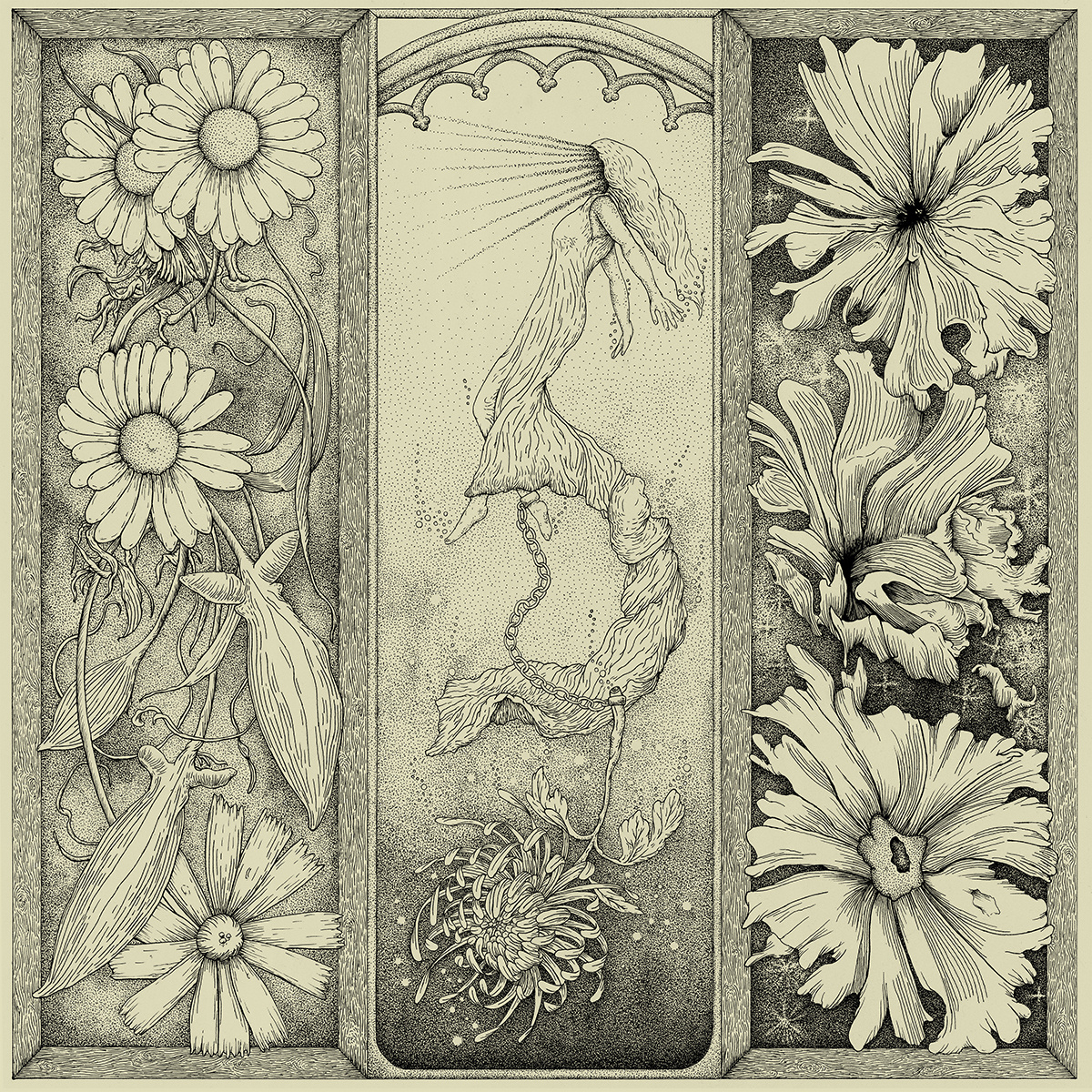
Cloud Rat is a quintessential grindcore band, but one that desires to push the envelope in lateral ways. The band makes “beautiful” music, but in a way that’s different even from a grindcore classic like Discordance Axis’ The Inalienable Dreamless. While the beauty in that album comes from flawless, crystalline execution, Cloud Rat’s beauty is brandished using techniques from outside of the spectrum of metal and hardcore. It can be heard most clearly in the vocals on Qliphoth opener “Seken,” which approximates Julianna Barwick’s choral layering for just 22 seconds before all hell breaks loose, as Madison Marshall’s screams put JR Hayes to shame. It’s also there in the ambient instrumental “The Killing Horizon,” which packs a more memorable punch than stacks of records that do this gig full time. And it’s especially nice that, in 2015, something can be this crushing while also exuding its own kind of positivity: “Driving my heel into his scales/ I impale him with his own crown.”
Dr. Yen Lo
Days With Dr. Yen Lo
[Pavlov Institute]
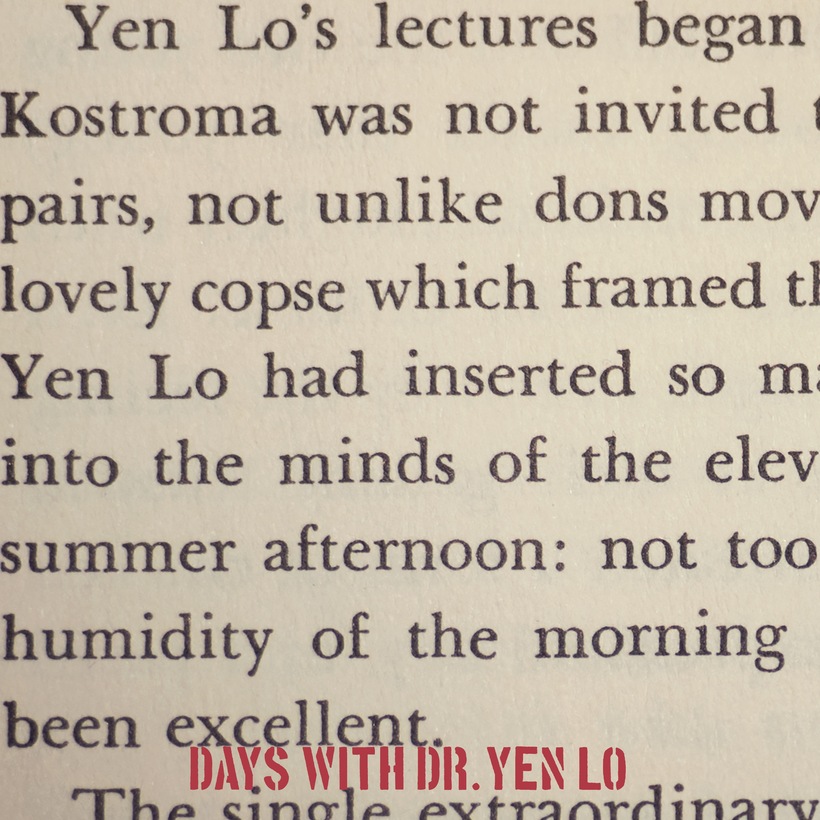
I keep thinking of all the things I half-remember Gary Lutz saying in “The Sentence is a Lonely Place” when I listen to Ka of Dr. Yen Lo rhyme. The way his flow interconnects the sounds and textures of both meaning and literal throat activity, drawing dotted lines from consonant to consonant, vowel to vowel, this I want to analogize to the fiction of Gary Lutz for its compact and driving force. So much so that I looked the essay back up and I found Lutz describing what it is he wants to write: “narratives of steep verbal topography, narratives in which the sentence is a complete, portable solitude, a minute immediacy of consummated language.” Yep. That’s it. That’s why I listened to Days with Dr. Yen Lo almost all the way through the first time before I realized there are hardly any beats, at least hardly any processional kick-snare-kick-snare, to be found. Sure, samples scratch and occasionally interrupt or talk back, and the instrumentals can stand up and walk on their own as vibe-out pieces, but the sustaining pleasure can be heard in Ka’s ability to patiently flutter language like it’s smoke caught in a vortex. Chill.
Holly Herndon
Platform
[RVNG Intl.]

Do the disembodied masses of short vocal samples spun together in granular synthesis dream of electric sheep, or home, or a better future? The most exciting difference between Platform and Movement is that Herndon now seems to really believe they do. Not everyone got what they wanted out of Platform because of its lack of tidy conceptualism or aesthetic unity, but the rest of us loved it because of the plurality of experiences it contains as well as its unbridled optimism. In the unique world of Platform, beat music, academic computer music, ASMR, opera, and pastoral narrative come together in a swarm of radical energy, like a cluster of drones flying apart and then back together against the sunrise, working together to establish a mobile, untraceable data reservoir. Ultimately, while it might help to read a bunch of critical theory, anyone anywhere can appreciate Herndon’s efficacy to make life better out here by exploring and shifting the physics of all the inside worlds of humanity’s physical and emotional investment.
D/P/I
Ad Hocc
[Zona Music]
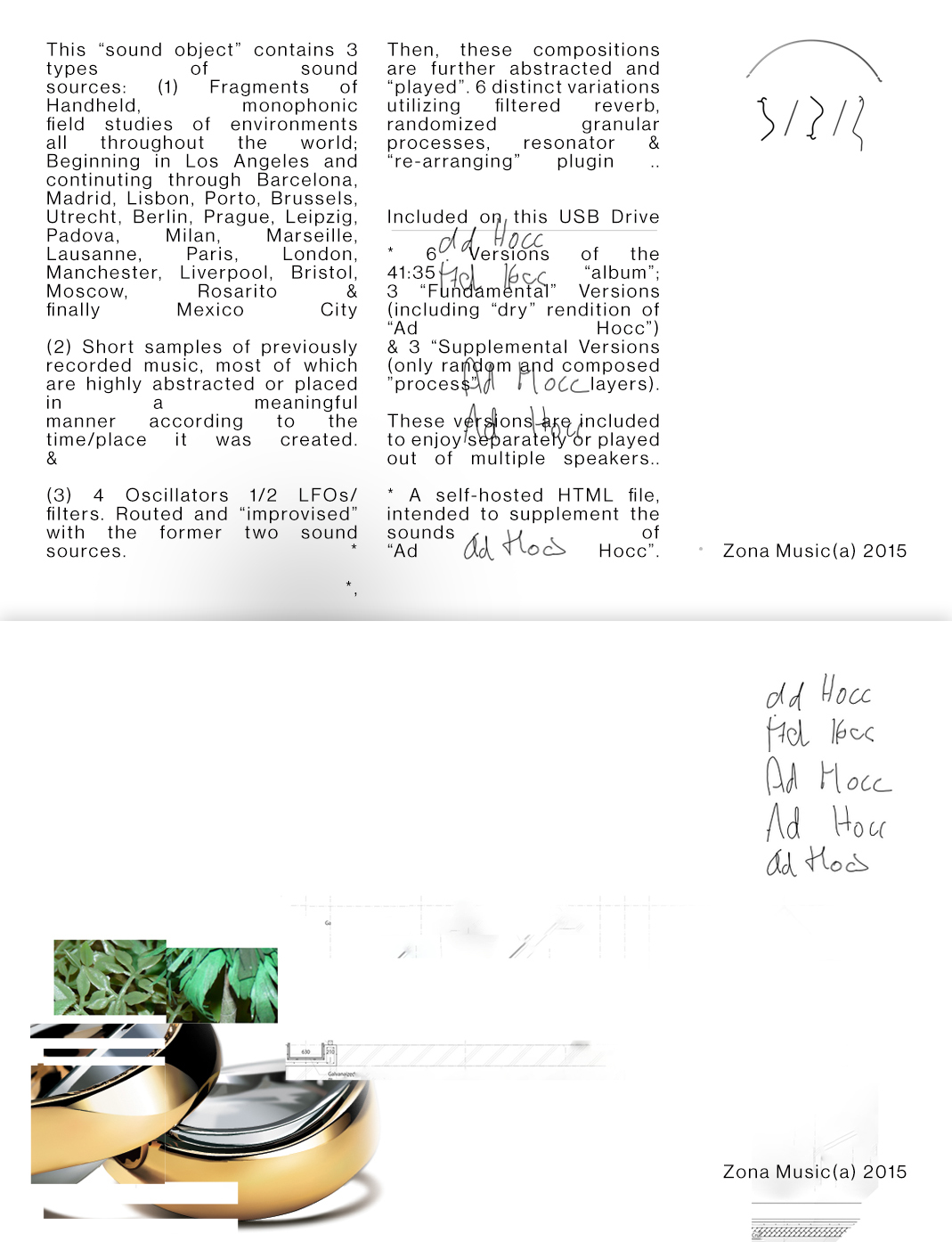
“Gray has managed to disentangle himself,” SCVSCV wrote in his comprehensive review of Alex Gray’s latest D/P/I installment, Ad Hocc. The release is composed of a grouping of six variations of one album (three fundamental variants and three supplemental variants), released as a USB drive to further prove there was and might never be a decisive umbrella term to group Gray’s pounding, clashed makeup. Like a blacksmith swinging forevermore, collecting, adding, and forging, Ad Hocc is the smoothed katana, free of blemish, strong as iron, untangled and played one-by-one, all together through six separate speakers or any way we please. The popularly unfamiliar freedom of the album gives Gray a multiverse platform, where every moment is decidedly its own. It’s autonomy, a sonic tool Gray has always pitched with, but never to the self-aware, exploratory velocity of Ad Hocc. To catch oneself in it all is to play with what could be built. There are no limits to the only umbrella D/P/I will ever own.
OTHER FAVORITES:
Ahnnu - Perception
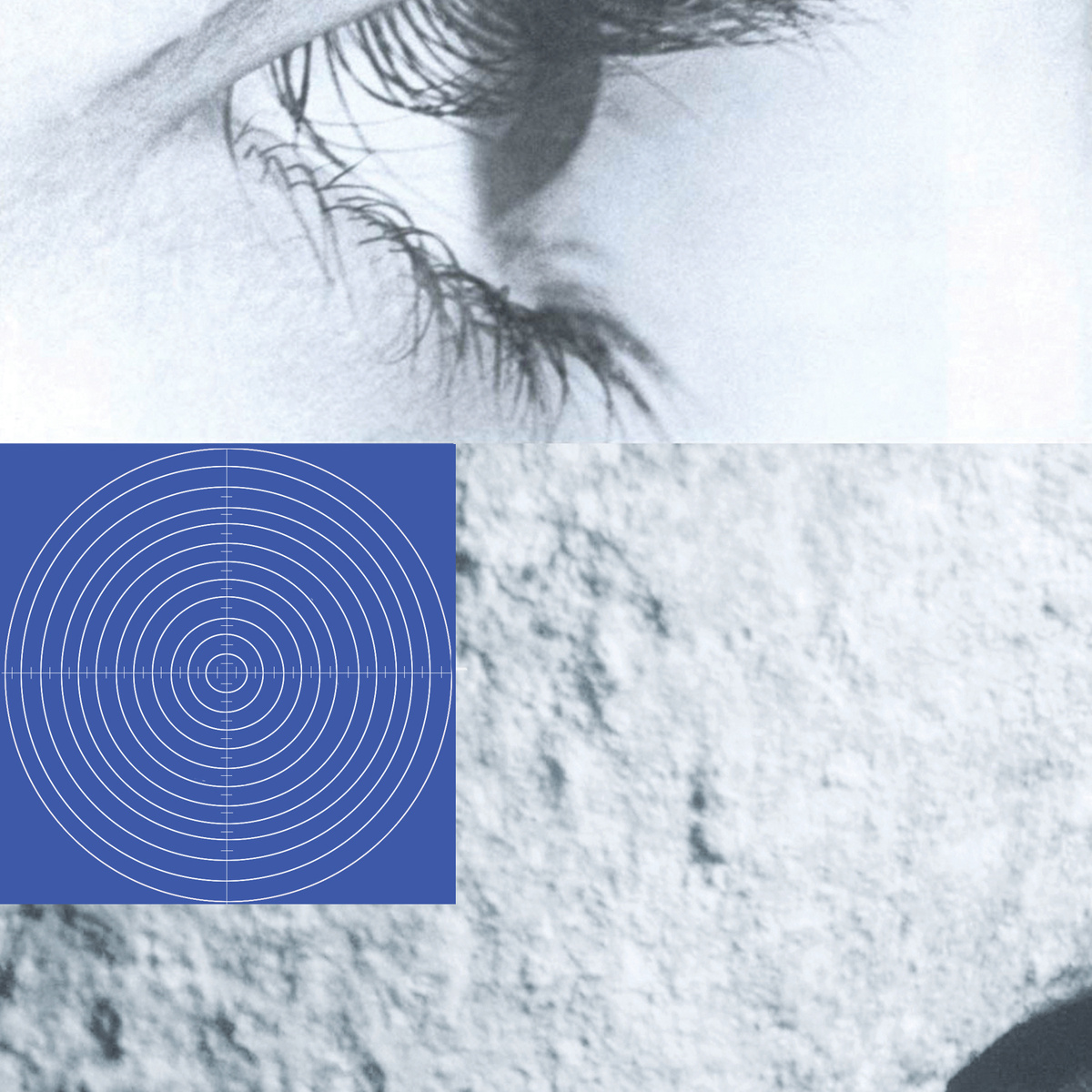
Ben Zimmerman - The Baltika Years
billy woods - Today I Wrote Nothing
Bricc Baby Shitro - Nasty Dealer
Chino Amobi - NON Shall Rise Above
Ciara - Jackie

Damien Dubrovnik - Vegas Fountain
Dean Blunt - Babyfather
Felicia Atkinson - A Readymade Ceremony
GABI - Sympathy
I-LP-O IN DUB - Communist Dub
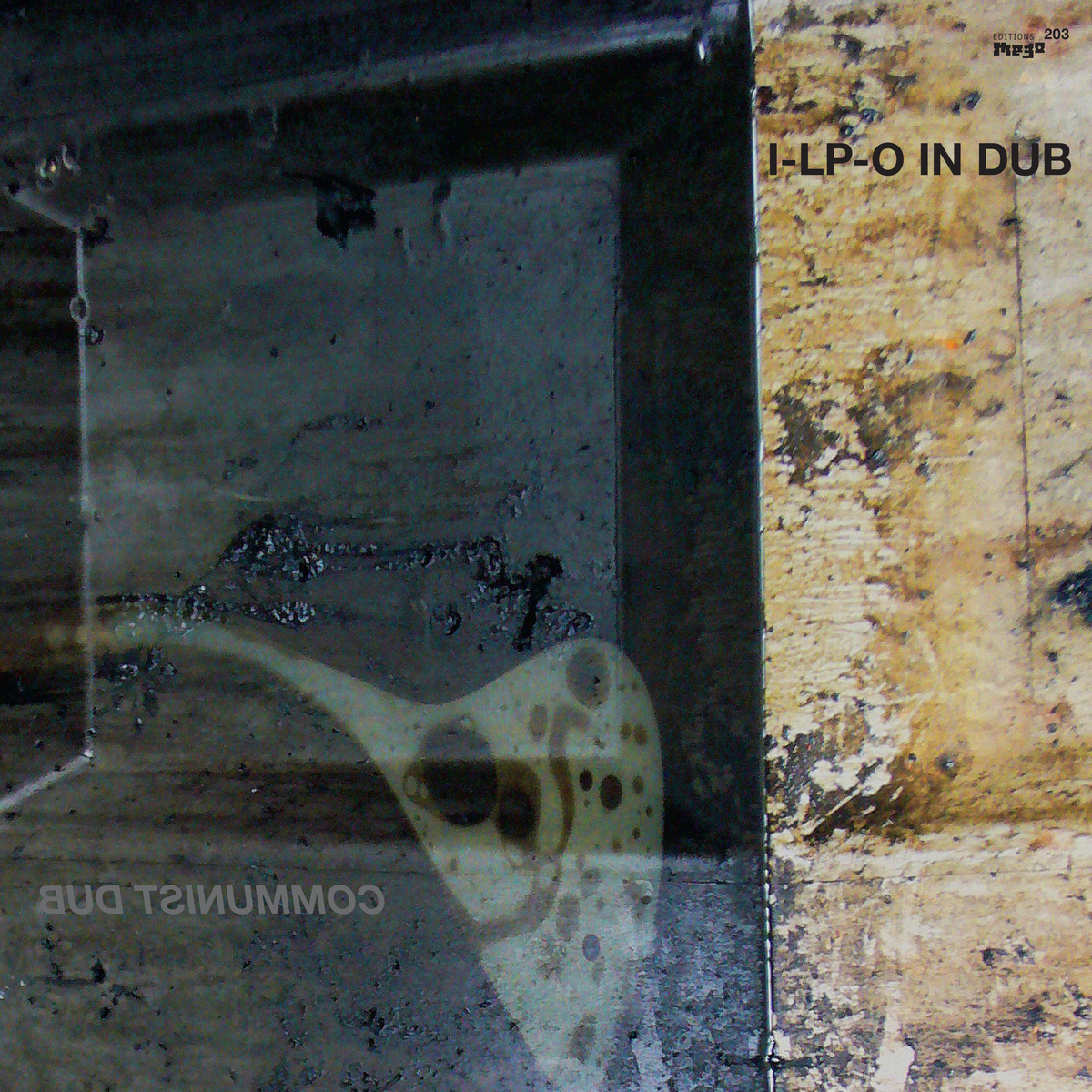
J.G. Biberkopf - Ecologies
iLoveMakonnen - Drink More Water
Kara-Lis Coverdale and LXV - Sirens
Katie Got Bandz - Zero To 39th
Lord Narf - Sick
Jim O’Rourke - Simple Songs

Mark Fell & Gábor Lázár - The Neurobiology of Moral Decision Makin
Matthew Revert - Not You
Meg Baird - Don’t Weigh Down The Light
Mohammad - Segondè Saleco
Slug Christ - The Crucifixion of Rapper Extraordinaire Slug Christ

PC Music - PC Music Vol. 1
Shamir - Ratchet
Sparkling Wide Pressure - Clouds and Stairs
Tinashe - Amethyst
 This feature is made possible by ChangeTip.
This feature is made possible by ChangeTip.
Tip your favorite artists via SoundCloud, YouTube, and Twitter. [What is this?]
For each year's first three quarters, we celebrate by sharing a list of our favorite music releases. Unlike our year-end lists, these quarter features are casually compiled, with an aim to spotlight the underdogs and the lesser-heard among the more popular picks. More from this series
